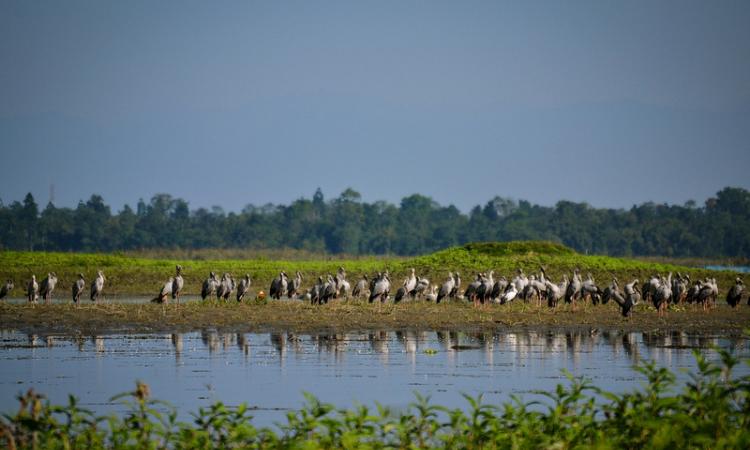
Fire breaks at an oil well in Assam damaging ecozones around the site
In a major incident that affected 7000 people in the state, a massive fire broke out at a leaking natural gas producing well of Oil India Ltd (OIL) in Assam's Tinsukia district. On May 27, the gas leakage started following an oil well blowout and after two weeks of hurried relocation plans and efforts to plug the leak, the well caught fire. As per the experts, the oil spill and fire have had a catastrophic effect on biodiversity zones around the site and restoration could take years. Just 500 m away from the site the Maguri-Motapung Beel, which hosts 80 fish species, and 300 bird species every year, is present and a little further on is the 340 sq km protected area of the Dibru Saikhowa National Park. (Business Insider, The Times of India)
India ranked 168 out of 180 countries in the 12th edition of the biennial EPI Index 2020
With a score of 27.6 out of 100, India secured 168 rank in the 12th edition of the biennial Environment Performance Index (EPI Index 2020) — that measured the environmental performance of 180 countries. The global index, which is released by Yale University on June 4, 2020, considered 32 indicators of environmental performance, giving a snapshot of the 10-year trends in environmental performance at the national and global levels. All South Asian countries, except Afghanistan, were ahead of India in the ranking, which implies that the country needs to re-double national sustainability efforts on all fronts and focus on a wide spectrum of sustainability issues, with a high-priority to critical issues such as air and water quality, biodiversity and climate change. (Down to Earth)
No tap water and toilets at home make India's fight against Covid difficult
According to an analysis by IndiaSpend, five of India’s most populous states--Uttar Pradesh, Maharashtra, Bihar, West Bengal and Madhya Pradesh--which account for 46 percent of all COVID-19 cases in the country, as on June 10, 2020, found that lack of exclusive access to drinking water, distance to the source of water, poor sanitation and handwashing habits are posing a challenge in the fight against the pandemic. Moreover, the demand of more water to fight the pandemic has raised the distress of women and girls who have to collect water from stand posts, where supply hours have been increased for ensuring social distancing. Along with this, in densely populated cities, community toilets and sanitation facilities pose a risk as it makes social distancing and hygiene difficult. (IndiaSpend)
Lockdown helps raise groundwater levels in Andhra Pradesh
The groundwater table in all the districts in the state has shown a rise in June as compared to the levels in the corresponding time of the previous year. The increase has been attributed to the temporary closure of commercial establishments and industries due to Covid-19 lockdown which has eased the burden on groundwater in Andhra Pradesh. According to the data from Andhra Pradesh Water Resources Information and Management System (APWRIMS), the groundwater table in the nine districts of coastal Andhra Pradesh region have shown an average increase of 2.96 meters below the ground level, while an average increase of 6.25 meters was observed in the four districts of Rayalaseema. (The Times of India)
Lonar lake in Maharashtra turns pink overnight, experts attribute it to salinity and algal bloom
The colour of water in Lonar lake in Buldhana district, Maharashtra, has turned to pink. The lake which was formed after a meteorite hit the Earth some 50,000 years ago is a popular tourist hub and also attracts scientists from all over the world. According to experts, that the water level in the lake is currently low as compared to the past few years and no fresh rains poured in, therefore, the low level of water in the lake may have led to increased salinity and change in the behaviour of algae because of atmospheric changes which caused the colour of water in the lake to change. (NDTV)
This is a roundup of important news published between June 5 - 11, 2020. Also read policy matters this week.